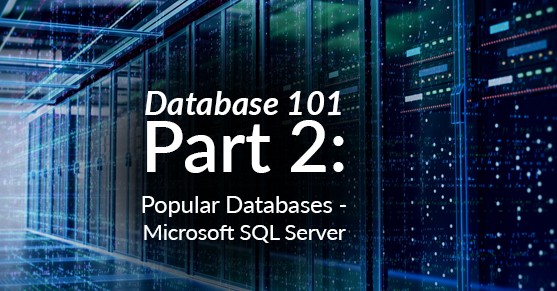In case you missed the first post with the Database Glossary of Terms, you can see it here.
Here are some popular databases that the Virtual-DBA team supports along with some feature or terminology highlights (usually relative to the most recent version of said databases).
Microsoft SQL Server – A RDBMS, as the name implies, from Microsoft. Just so you know, in this case, it’s usually pronounced “Sequel Server.” This database is easy to install, use, and develop applications around, yet it can scale to support massive Petabyte (PB) workloads. It’s available in many editions to meet your licensing needs, and XTIVIA can help you support and license all of them. https://en.wikipedia.org/wiki/Microsoft_SQL_Server
- Editions (presented alphabetically, list subject to change at Microsoft’s whim):
- Analytics Platform System (APS)
- Azure
- Azure SQL Data Warehouse
- Azure SQL Database
- Business Intelligence
- Compact (SQL CE)
- Data Warehouse Appliance Edition
- Enterprise
- Express
- LocalDB
- SQL Server Developer
- SQL Server Evaluation Edition]
- SQL Server Fast Track
- Standard
- Web
- Workgroup
- High Availability: It’s called Always On
- Replication: Transactional replication, Merge replication, and Snapshot replication
- Operating System: Windows, Linux (Linux is new—I think there was dancing when announced.)
- Cloud: You can run SQL Server in almost any computing instance you spin up in the cloud or you can use the cloud vendor-supplied managed instances below. Either way, the XTIVIA team can help you build, tune, and manage your investment.
- Azure SQL Database (Many options)
- Amazon RDS for SQL Server
- History: 1989 Microsoft and Sybase joined to create SQL Server and release it for OS/2. Then, about 1993, Microsoft went their own way and SQL Server 6.0 was the first version split from Sybase, designed for Windows NT, and did not include any new direction from Sybase. The end of working with Sybase on SQL Server was in 1995. SQL Server was totally rewritten in 2005, converting any remnants of Sybase code into Microsoft code. And, finally, in 2017, only running on Windows became a thing of the past when the ability of running SQL Server on Linux was added (remember, there was most likely dancing involved).

